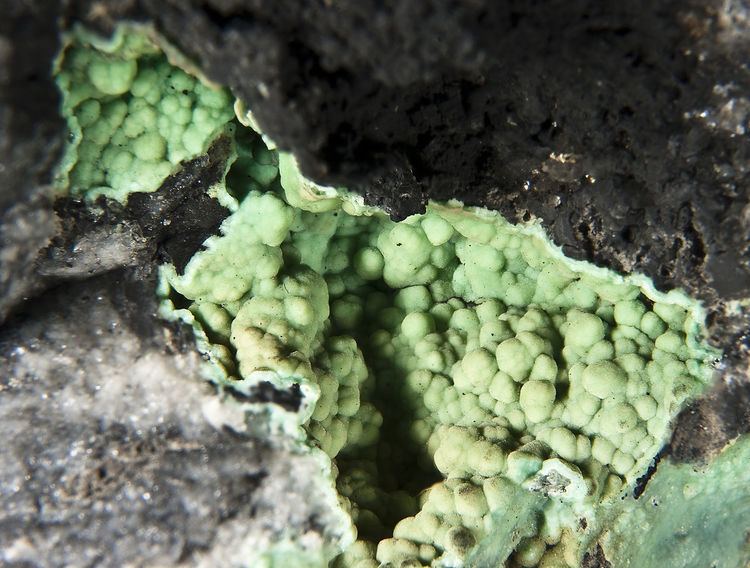Category Phosphate minerals Strunz classification 8.CD.10 Space group Pbca | Formula(repeating unit) AlPO4·2H2O Crystal system Orthorhombic | |
 | ||
Crystal class Dipyramidal (mmm)H-M symbol: (2/m 2/m 2/m) | ||
Variscite is a hydrated aluminium phosphate mineral (AlPO4·2H2O). It is a relatively rare phosphate mineral. It is sometimes confused with turquoise; however, variscite is usually greener in color.
Variscite is a secondary mineral formed by direct deposition from phosphate-bearing water that has reacted with aluminium-rich rocks in a near-surface environment. It occurs as fine-grained masses in nodules, cavity fillings, and crusts. Variscite often contains white veins of the calcium aluminium phosphate mineral crandallite.
Variscite is sometimes used as a semi-precious stone, and is popular for carvings and ornamental use. It was first described in 1837 and named for the locality of Variscia, the historical name of the Vogtland, in Germany. At one time, variscite was called Utahlite. At times, materials which may be turquoise or may be variscite have been marketed as "variquoise". Appreciation of the color ranges typically found in variscite have made it a popular gem in recent years.
Variscite from Nevada typically contains black spiderwebbing in the matrix and is often confused with green turquoise. Most of the Nevada variscite recovered in recent decades has come from mines located in Lander County.
Notable localities are Lucin, Utah and Fairfield, Utah in the United States. It is also found in Germany, Australia, Poland, Spain and Brazil.
